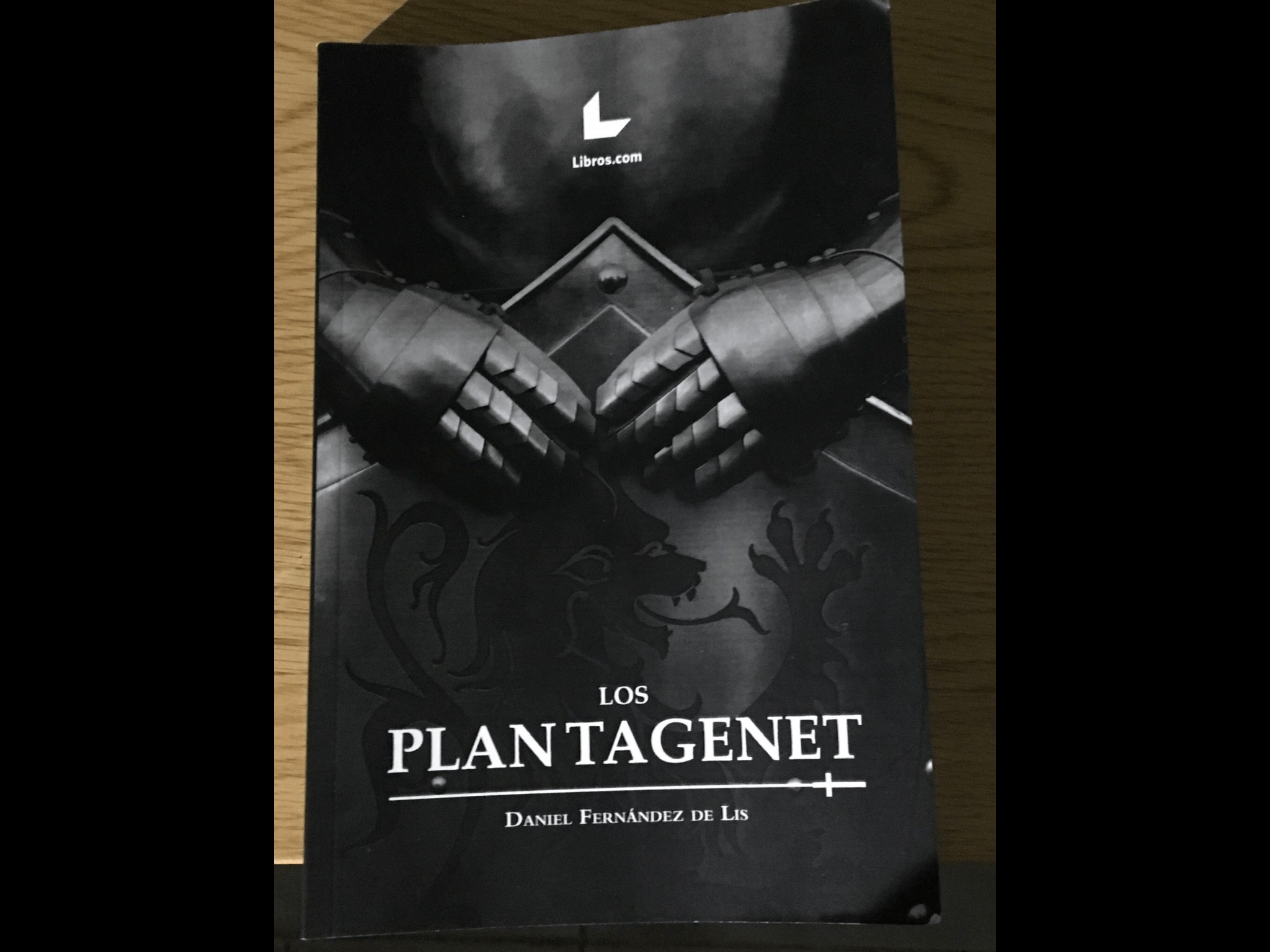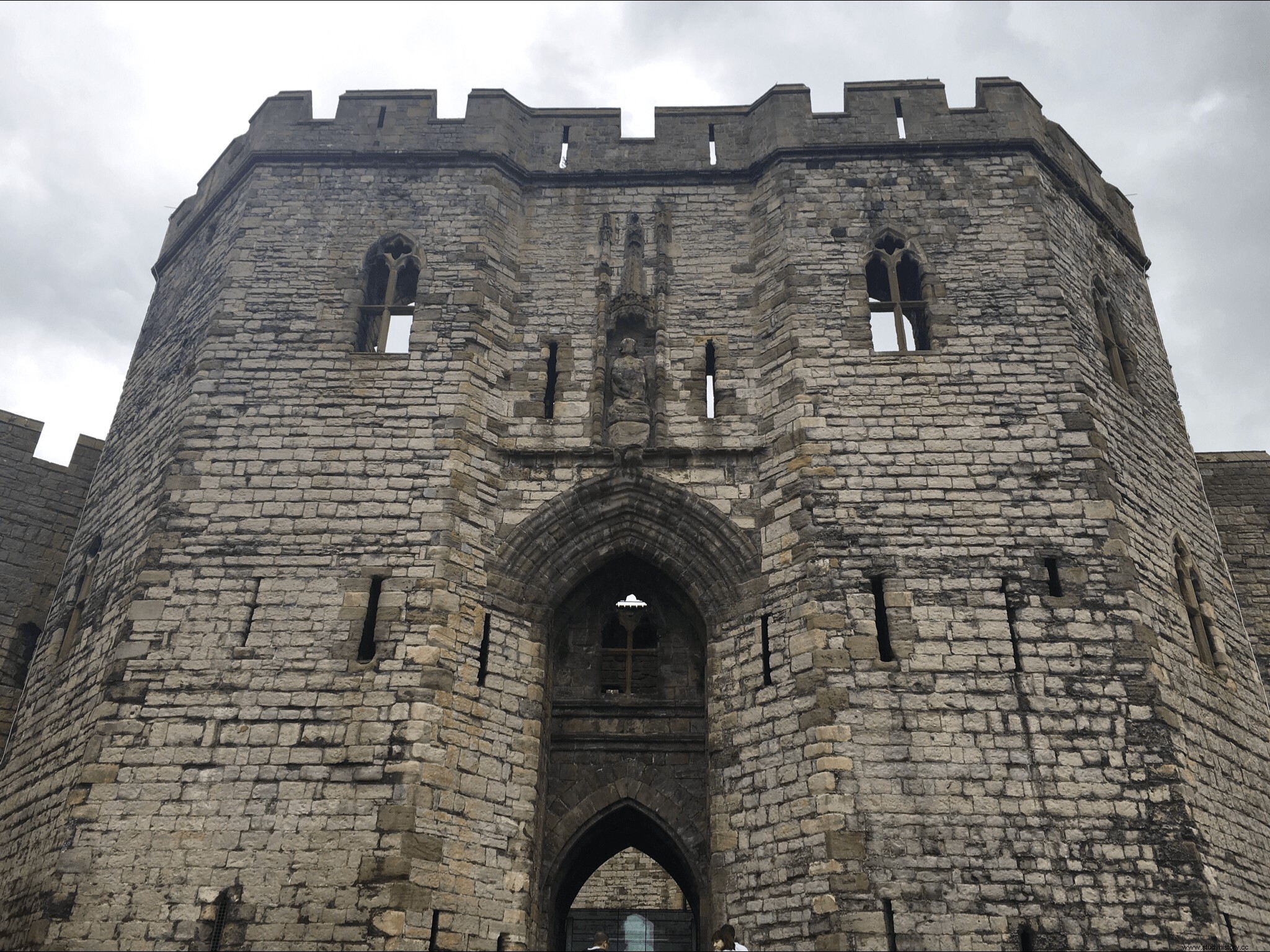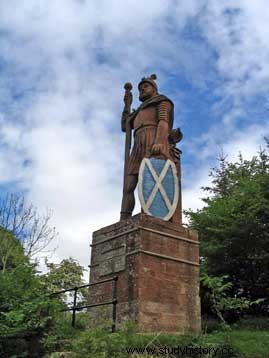Entry taken from the book The Plantagenets

After the death of King Alexander III of Scotland in 1286 and the death of his granddaughter Margaret of Norway in 1290, there was no clear candidate for the Scottish throne. It was at this time that the Council of the six Guardians of Scotland decided to appoint Edward I of England as arbitrator to decide the question of which of them had the best claim to the throne.
It may seem strange that they requested the mediation of Edward I in the election of his king; but he was the most expert European monarch as a mediator in this type of conflict; he also was the ideal candidate for the role due to the very close relations between the two neighboring kingdoms. All the great lords of Scotland had important possessions in English territory, for which they were vassals of Eduardo. The one considered by many to be the best candidate for the throne, John Balliol, was the son of an Englishman who had fought alongside Henry III at the Battle of Lewes. The other great candidate with more possibilities, Robert Bruce, had accompanied Edward in his almost fatal experience in the crusades along with several brothers of John Balliol. And a Scottish contingent traveled to support Henry and Edward at the Battle of Evesham against Simon de Montfort, though they did not arrive in time to take part in the fighting. The appointment of Eduardo as mediator, the Guardians thought, was without a doubt the best choice.
As a preliminary to ruling on which candidate had the best claim to the Scottish throne, Edward set out to put an end once and for all to a long-standing issue. controversy between the English and the Scots:if the king of England was the sovereign lord of Scotland, to whom he should pay homage or not. It was a matter on which the English and the Scots did not agree, bringing to light old legends about the mythical birth of one country and the other.
But more than these legends what really mattered in the matter were the precedents. The first of these occurred in 1174 when the King of Scotland, William the Lion, was imprisoned by Henry II of England and paid homage to him. Later, once free, he reneged on his oath claiming that he did so under duress. Richard the Lionheart agreed with him to renounce the homage in exchange for a considerable sum of money to finance his crusade.
When Alexander III of Scotland married the daughter of Henry III he refused his request that he pay homage to her. Edward I, upon being crowned at Westminster, required him again to do so. Diplomatically, the Scotsman answered yes; but only in what referred to his lands on English soil. Edward insisted that he pay homage to him as King of Scotland as well. Alexander replied:"The only one who has the right to pay homage to him as King of Scotland is God, and He alone is my sovereign."
So when asked to mediate the election of the new Scottish king, the English sovereign it was time to put an end to the problem. From the outset, he made his intentions clear with another of his characteristic symbolic gestures. In the spring of 1291 the Guardians were waiting for him in the Scottish town of Berwick, near the border, to elucidate the issue; Edward stopped just five miles away, at Norham, on the English side of the border, and let the Guardians know that they could come and meet him there.
At the beginning of the meeting Edward's representative demanded that the King of Scotland who was elected in the process should recognize him as sovereign lord. He had taken that step because a few weeks earlier he had received a letter from Robert Bruce in which he ratified the English interpretation of his sovereignty over Scotland and thought that this ensured that the Guardians would also agree. But these reacted indignantly, pointing out that only a king of Scotland could decide on that question and that for them the king of England was not sovereign lord of Scotland; saying this they got up and left Norham. Eduardo changed tactics.
If before starting the election process of the candidate with the best right to the throne, each and every one of them recognized him as sovereign lord, the Guardians could not say anything; they themselves had recognized that it was not up to them to decide on the matter. Robert Bruce quickly accepted and this caused John Balliol, who probably would have put up more resistance, to do so the next day so as not to be left out of the competition. Obtained the consent of the two main contenders, the rest was a piece of cake. Edward had made it so that whoever was elected King of Scotland, he would be his sovereign lord and receive his homage. The process to choose a king could begin.

And to explain the arguments of one and the other the The essential question was, does the son of a royal's second daughter have a better claim or the grandson of his first daughter? That was the discussion between John Balliol and Robert Bruce. Both based their claim on the fact that they were descendants of Scottish King William's brother, David. Balliol was the grandson of his eldest daughter and Bruce the son of his second daughter.
Edward leaned more in favor of Balliol's criterion, firstly because he had a similar case in his own house and was interested in defending the criterion of primogeniture over that of degrees of descent, but above all, and much more importantly, because he considered that John Balliol would be a much more malleable King of Scotland than Robert Bruce.
Eduardo had made his decision from the beginning of the process, but he was not willing to make things easy for the Scots. There were neither more nor less than thirteen contenders for the throne, although no one considered that someone other than Balliol or Bruce had a real chance of being chosen, but Eduardo insisted on listening to the arguments of each and every one of them. There was only one who could be seriously considered, Florence Earl of Holland, who surprised by telling the curious story that David, from whom both Balliol and Bruce were descended, had relinquished his dynastic rights in favor of his sister Ada from whom he was descended. The story seemed somewhat absurd, but Eduardo seized on it to delay the process and gave Florence ten months to provide evidence of her arguments. Meanwhile, to cover his back, she arranged for his daughter to marry Florence.
On November 5, 1292, Edward ruled that John Balliol had a better claim to the throne than Robert the Bruce. As a consequence, he aligned himself with Florence of Holland, whose claim was yet to be decided. According to rumours, Florence had promised to give Bruce a third of the kingdom if he were chosen. But Edward was clear about his candidate, and on November 17, 1292 John Balliol was appointed King of Scotland.
For the Scots the role of Edward I of England in Scotland had ended. For him, it had only just begun.
After the election of John Balliol as King of Scotland, two very different ceremonies took place. On November 30, 1292, he (under the name of John I of Scotland) was enthroned in the way that the kings of Scotland had been since time immemorial; at Scone Abbey and before a red block of stone known as The Stone of Scone or The Stone of Destiny. Eduardo was not present; he was very clear that a Scottish king was obliged to attend the coronation of a king of England, but that no English monarch, sovereign lord of Scotland, had to witness his coronation.
The second ceremony, the really important one for the English king, took place on December 26 in Newcastle. Juan I of Scotland knelt in front of Eduardo I of England and completed the homage ceremony by which he recognized him as sovereign lord. If the Scots thought this was merely a formal matter, they were sorely mistaken, as Edward immediately set out to prove to them. Days later, a citizen of Berwick, who disagreed with various sentences handed down during the Guardians' government, appealed to Eduardo, who revoked one of the sentences.
The Scots reacted indignantly claiming that this action went against all the agreements they had reached with the Guardians. Eduardo answered that, once the new king was appointed, any previous commitment was annulled and that if he understood it pertinent as a sovereign lord, he could even summon the King of Scotland to London to render an account. For him, the king of Scotland exercised the authority that had been delegated to him by the English king; and no more.
We didn't have to wait long. Faced with a claim by a Scottish baron against a decision by John I of Scotland, Edward summoned John I of Scotland to London in November 1293. Balliol's initial proud attitude ("I am King of the Kingdom of Scotland and I will answer no question without the advice of my advisers in my kingdom"), it was short-lived. He ended up reaffirming his homage to Edward, described himself as "his man in Scotland", and was condemned to deliver three castles and cities to his sovereign lord.
Edward's plans for Scotland were postponed, first by an attempt by the King of France to dispossess England of her possessions in Gascony; and later by a rebellion in Wales, which tried to take advantage of Edward's troubles in France to drive him out of the country; it was quickly put down, but kept the English busy for a time. The Scots, dissatisfied with what they understood as the English breach of the agreements adopted and in disagreement with the interpretation that Eduardo had been making of his condition as sovereign lord of Scotland, decided to try the same as in Wales. The magnates of the kingdom forced John I to renege on his oath of homage to Edward I and signed an agreement with France to jointly declare war on England.
Eduardo responded quickly and forcefully to this maneuver. At the end of November 1295, a meeting of Parliament was held in Winchelsea where it was agreed to expropriate all property that the Scots had in England, raise an army to invade Scotland and "march against John, King of Scotland, who has violated due obedience to the crown of England. The English army, the largest ever known in the islands and to be joined by three thousand men from Ireland, assembled at Newcastle and set out for Scotland on March 1, 1296. The Scots had attacked Carham and Carlisle. This gave Eduardo a “casus belli”, although the truth is that he wasn't too worried about it either.
The English army headed for Berwick. It was one of the three places that Juan I was condemned to return to Eduardo in his day, but the delivery had not been carried out. Berwick refused to surrender to Edward. The city's defenses were weak and the English numerical superiority overwhelming. The city soon fell and the British began an indiscriminate massacre of civilians who had refused to surrender. Edward allowed the castle garrison, who did surrender after the city was taken, to keep their lives and possessions from him and granted them freedom under oath never to take up arms against him again.
The first serious engagement between the two armies took place days later at Dunbar, with an overwhelming English victory attributable in equal parts to superior numbers and tactical indiscipline on the part of the Scots. Edinburgh was the next target and the city fell after five days of siege. The military parade continued the following days.
But not all of Eduardo's efforts occurred on the battlefield. The Bishop of Durham contacted John Balliol and offered him a peerage in England in exchange for relinquishing his status as King of Scotland. Balliol, who by this time was anxious to forget about the Scottish problem and return to his native England, accepted the proposal. The resignation ceremony, or the betrayal of his country depending on who tells it, took place on July 8 in Montrose.
But when Edward took Edinburgh he found documentary evidence of the agreement between France and Scotland to attack England jointly. He flew into a rage and this affected the fate of John Balliol, who would no longer enjoy a peaceful future in the English countryside but a prolonged stay in the Tower of London.
Once military rule was consolidated and after Scotland had been left without a king due to the resignation of John Balliol, Edward decided that it was time to take power in the country. In August 1296 he convened a Parliament at Berwick which was attended by thousands of Scottish citizens to pay homage to him as King of Scotland. An administrative system of English officers, judges and soldiers was established to rule Scotland with a firm hand. As definitive proof of his intentions, Edward confiscated the Stone of Scone, the place where all the kings of Scotland were proclaimed.
The English domination of Scotland seemed to go unhindered. The old candidate for the throne, Robert Bruce, had died, his son had taken to his heels and settled in his English possessions, and there was only one Robert Bruce left in Scotland, grandson of the former and son of the latter, too beardless to pose a threat. . Eduardo decided to return to England thinking that the Scottish problem was definitely under control. This time it was he who was wrong; he didn't count on William Wallace.

Ever since Edward had proclaimed himself king of Scotland, conditions had been harsh for the natives of the place. Especially the collection of taxes became a problem with the Scots; Eduardo needed funds for his disputes in Gascony and subjected all his subjects to a suffocating regime. For Edward, his tax exaction campaign evidently included the Scots, whom he considered as subject to him as the English or the Welsh. But if he already had problems in England, where they were used to his tax demands, much worse was the reaction to his pressure in Scotland, where they were not.
The Governor of Scotland, Earl of Surrey, spent most of his time in England. With no one to control them, the English officials charged with enforcing the law and collecting taxes exercised his authority with complete freedom of movement. After all, all Eduardo asked them was to bring him the money he needed, he was not very concerned about the means to obtain it.
One of the first to rebel against the situation was the young Robert Bruce. His grandfather had died, his father had settled in England, and the Bruces had always been supportive of Edward in Scotland. His rebellion was short-lived; Faced with a vastly superior English army, Bruce and the other nobles submitted at Wishart on July 7.
In London two letters were received; the first reported that the Scots had been dispersed; but in the second, sent by Hugh Cresingham, an official who was more aware of the situation, Edward was warned that two Scottish rebel forces were meeting; one in the north, along the River Fork, led by a nobleman named Andrew Murray; the other in the south, in the Selkirk forest and its leader was named William Wallace.
Although there are different versions, it seems that William was the youngest son of Alan Wallace, a small landowner from Ayrshire and that his quarrel with the English began when the sheriff of Lanark appeared for his land claiming taxes that his family could not pay. William was taking care of cattle in the field that day and that saved his life, although the rest of his family paid with their own for not being able to pay the taxes required by Eduardo and were massacred by the sheriff's men. Upon returning to find his entire family dead and his possessions expropriated from him, he decided that in his life there would be no other goal than to kill Englishmen. He started with the person responsible for the death of his family, the sheriff of Lanark. He fled to the Selkirk forest and there he was surprised that day by day he was joined by more and more men who knew of his deed and shared his hatred for the English.
When he learned that another group of rebels led by Andrew Murray existed in the north, Wallace decided to join his forces with them and together they waited for the inevitable attack by the English army. The only place in Scotland where the outrageous superiority of the English would be useless was at Stirling Bridge. The River Forth, which separates the south and north of Scotland, is not fordable at that point and can only be crossed by a bridge whose width does not allow more than two men to cross it at the same time and at whose exit there are some marshes that also make it difficult the movement of an army. On September 11, 1297, the Scots led by Murray and Wallace attacked the English army when half of it had crossed the bridge to the north and the other half was on the south slope, from which they could only be helpless witnesses of the slaughter of his companions. And send news to Eduardo of what happened.
After his bath in glory at Stirling Bridge and his appointment as Guardian of Scotland, William Wallace would not take long to experience in his own flesh that "he falls harder" when he was defeated by Edward I a year later at Falkirk... But that's another story.
